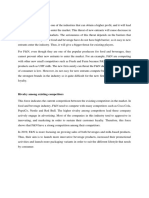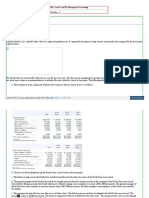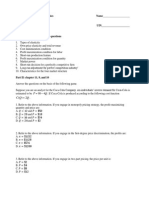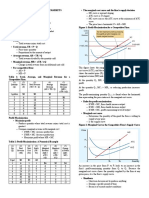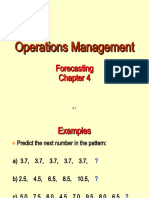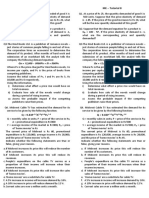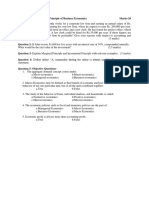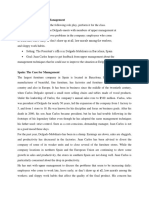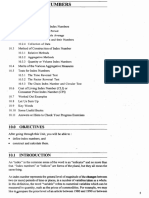0% found this document useful (0 votes)
470 views3 pagesDemand Function and Elasticity
The document discusses the demand function for Midwest Cable TV service and asks the reader to determine whether several statements about elasticities and the demand curve are true or false. It provides the demand function, current values for variables, and an explanation of the correct answers. Some key points:
- The demand curve shows that demand is elastic with respect to price but inelastic with respect to income.
- 'Home movies' are a complementary good to cable TV, so their prices are negatively correlated.
- A 5% increase in income would lead to an 8% increase in demand, not 16% as stated.
- Midwest's sales are determined by plugging current values into the demand function, not over
Uploaded by
Harshita RajputCopyright
© © All Rights Reserved
We take content rights seriously. If you suspect this is your content, claim it here.
Available Formats
Download as DOCX, PDF, TXT or read online on Scribd
0% found this document useful (0 votes)
470 views3 pagesDemand Function and Elasticity
The document discusses the demand function for Midwest Cable TV service and asks the reader to determine whether several statements about elasticities and the demand curve are true or false. It provides the demand function, current values for variables, and an explanation of the correct answers. Some key points:
- The demand curve shows that demand is elastic with respect to price but inelastic with respect to income.
- 'Home movies' are a complementary good to cable TV, so their prices are negatively correlated.
- A 5% increase in income would lead to an 8% increase in demand, not 16% as stated.
- Midwest's sales are determined by plugging current values into the demand function, not over
Uploaded by
Harshita RajputCopyright
© © All Rights Reserved
We take content rights seriously. If you suspect this is your content, claim it here.
Available Formats
Download as DOCX, PDF, TXT or read online on Scribd
/ 3







